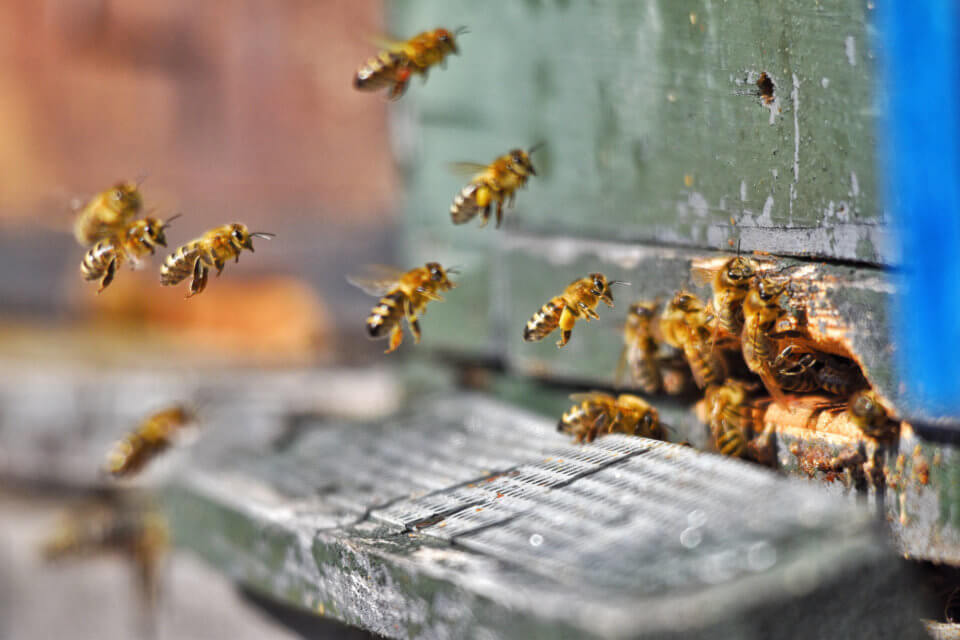We have new toys in the bee yard! We recently installed broodminder scales under the GROW honeybee hives to help keep track of how they are doing without having to open the actual hives, which is especially challenging during winter. The scales take a lot of the guesswork out of beekeeping. Before, we could tell that one hive (“Honey North”) was a lot heavier with honey than the other (“Honey South”), but by how much? And when should we provide supplemental feed to the lighter one to ensure it has enough food to survive winter?
 With the broodminder scales, we could see that in early January, Honey North was still a reassuring 131 lbs., while Honey South was a disconcerting 87 lbs. (it should be closer to 110 lbs. to have a fighting chance of making it through the end of winter). Time to act! Thankfully a warm window presented an opportunity to open the hive, confirm the colony was still alive, and add raw sugar above the hive cluster like the Mountain Camp method. As the heat from the hive rises, moisture condenses at the top causing the sugar to cake together.
With the broodminder scales, we could see that in early January, Honey North was still a reassuring 131 lbs., while Honey South was a disconcerting 87 lbs. (it should be closer to 110 lbs. to have a fighting chance of making it through the end of winter). Time to act! Thankfully a warm window presented an opportunity to open the hive, confirm the colony was still alive, and add raw sugar above the hive cluster like the Mountain Camp method. As the heat from the hive rises, moisture condenses at the top causing the sugar to cake together.
After installing the sugar, I took another reading of the hive weight, which had increased to 97 lbs. Now, I can easily keep tabs on the weight and reasonably tell when I might need to offer sugar yet again (assuming the weather cooperates).
We are also helping to ensure our bees survive the winter by doubling down on insulation. Prior to this year, we only used a square of 1” insulation foam placed between their inner and outer covers. This year after installing the foam, I was concerned that it propped the telescoping outer cover up so much that it didn’t sufficiently cover gaps to protect against cold drafts. I therefore got scrap packaging foam from our exhibits department and wrapped the hives up nice and snug with packaging tape. Even on a warm day, I could really feel the warmth exuding from the hive when I removed the tape from South Honey to install the sugar!
But what about ventilation? Lots of resources stress that bees need ventilation even in the winter (the logic is that bees can survive the cold but not if they are wet from unventilated condensation within the hive). Yet, it seems that we almost always lose one of our hives each winter or they enter spring precariously weak. It got me wondering if there is a better way. Reading about beekeeping overwintering myths has given me encouragement to experiment! Stay tuned!
See what else is happening in GROW!






